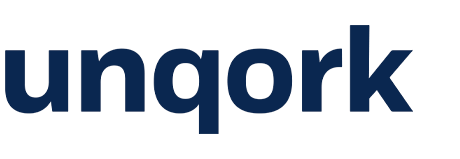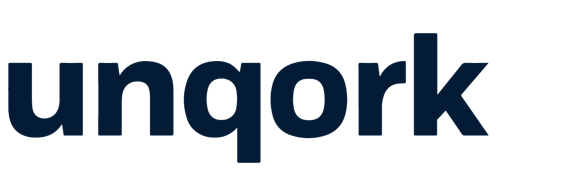Introduction
Fintech is on a roll. In Q2 2021, VC-backed fintech companies raised a record $30.8B, 30% more than the previous quarterly record. And some of the most promising startups who have taken advantage of these ascendent technologies—including SoFi, Upstart, and Root Insurance—have gone public in the last year, raising many more billions. As a result, these startups have deeper pockets than ever. And they are using that capital to wrestle away a larger and larger share of markets long dominated by large incumbent institutions. No wonder 88% of respondents from incumbent firms told PWC that they expect to marketshare to digital innovators.
To win over customers and investors alike, digital attackers like SoFi and Root have put all their efforts into digitizing traditional consumer-facing processes. As a result, they enable consumers to complete complex financial transactions in minutes rather than in days or weeks. Digitization also helps these startups keep operating costs very low relative to many incumbents. After all, all self-service transactions cost up to 99% less than those that require human intervention, Gartner estimates.
However, it is dangerous to write off the incumbents, as Bill Gates knows well. He predicted the demise of traditional financial institutions back in July 1994. Yet over the next 25 years, U.S. banks quadrupled their annual earnings from $51 billion to $221 billion, according to the FDIC.
Even in the age of fintech, large incumbents still enjoy “economies of scale and scope and network effects,” according to Bank of International Settlements (BIS) researchers. This gives them a competitive advantage across customer acquisition, compliance, capital access, and customer data, finds the BIS.
Still, financial services know they can’t rest on their laurels, especially as digitally savvy Gens Y and Z make up a larger percentage of the market. Already, 3-out-of-4 members of Gen Y prefer all-digital self-service to interactions. Even a solid majority of Baby Boomers and Gen Xers prefer transactions that they can complete on their own, as they are becoming less and less patient with less-than-instant results.
To fend off the fintech threat, large incumbents must do more to digitize consumer experiences. However, they first must overcome a number of structural disadvantages. While the startups have built underlying systems from the ground up with the goal of serving customers digitally, large incumbents have had to wrestle with disparate systems spread across sprawling infrastructures. Startups have also focused their entire organization on digital experiences, while incumbent institutions have a wider range of challenges that divide their focus. Finally, the security, compliance, and governance concerns at incumbent firms have also tended to favor the status quo, especially given the technical challenges involved in weaving together disparate backend systems.
A few years ago, these were all serious challenges to digitization, even at firms with deep pockets. Digital initiatives involved complex planning and long, painstaking, high-risk development projects.
But that was before the advent of enterprise-grade no-code. With an all-visual development environment like Unqork’s, even less experienced developers (Unqork calls them Creators) can quickly design and build customer-facing applications—there are no lines of code to write, edit, or interact with at all. Thanks to a plug-and-play approach to integration, they can even build applications that handle complex transactions involving disparate backend systems. As a result, development with the Unqork’s no-code platform is “a minimum of three times faster and three times less expensive” than the company's previous approach, says James McGlennon, the CIO of insurance giant Liberty Mutual.
While many large firms are either purchasing or entering into partnerships with startups, or fintech providers themselves, they now have another option. Here are five ways no-code is turning incumbents into digital disruptors.
1. Take a modular approach—and integrate legacy systems quickly
In the past, digital transformation was a multi-year endeavor, requiring a massive, top-down effort to integrate backend systems and the data they produce. And that is before creating a single consumer-facing application. Considering 70% of such initiatives fail to reach their stated goals, no wonder banks have been slower to innovate than their fintech-focused competitors.
By contrast, no-code enables incumbents to start building applications without making any changes to underlying systems. With an extensive library of pre-built APIs, even less experienced developers can quickly connect customer-facing elements with back-end processes. Even when underlying databases lack a “wrapper” that integrates with other systems, Unqork enables you to build one quickly.
As a result, banks can modernize customer-facing applications without having to rip and replace existing infrastructure. Just as important, they can maintain a best-of-breed strategy going forward, which can always evolve to best meet the needs of the business while minimizing the risk of disrupting customer experiences.
SUCCESS STORY:
Global capital markets firm unifies its E2E operations in just 6 months
2. Make development customer-centric
With an all-visual development environment, Creators can think like consumers. Drag-and-drop configurable elements represent user-facing capabilities, as well as back-end logic and integrations with legacy systems and third-party services. As a result, Creators can design around the customer experience itself, not from what may or may not be technically possible.
In this way, you can quickly produce a minimum viable product (MVP), even for complex, multi-step transactions that touch multiple backend systems. The sooner you get applications into the hands of consumers, the sooner you can start collecting granular user data to understand what is working and what is not. With this insight, you can quickly iterate to provide better customer experiences, just as startups have been so good at doing.
“What you get with no-code—and specifically with Unqork—is an opportunity to let operations teams and business teams innovate without relying entirely on overworked and under-capacity technology teams.”
—Chris DeBrusk, Partner, Oliver Wyman
3. Integrate third-party services instead of building everything yourself
From identity verification to employment and income verification, even one step in a financial transaction can require complex, multi-step processes. Instead of building your own solution or creating complex integrations with third-party services, choose a no-code platform that provides native integrations with leading technology partners that can help you complete digital transactions quickly and securely.
From pre-configured software snippets to pre-built integrations with partners ranging from Truwork to Troolio, developers can instantly add critical functionality to their Unqork environment. When they want to add this functionality to an application workflow, they simply drag and drop it into their application design.
As a result, you can immediately take advantage of advanced capabilities from best-of-breed providers. For example, AI-driven analysis and natural language processing can help you speed up manual review processes, automate complex decision-making, and make offers to consumers in the moment. As new, cutting-edge technologies become available, you can adopt them quickly and seamlessly to further enhance customer experiences.
"The magic of Unqork's platform is that it allows us to take a very unusual or bespoke set of inconsistent workflows and create an assembly line, so we could bring the work to the right resource at the right cost at the right time. We've been able to extract 50% of the hours out of the process for this client."
—Paul Deitch, Principal, Management Consulting, KPMG
4. Empower customers with self-service, even for complex transactions
Traditionally, it has been both complex and expensive to build self-service functionality that meets modern consumer expectations. And those expectations grew exponentially during the COVID pandemic, which accelerated digital self-service adoption by three to four years, according to McKinsey. The rate of change was even faster among digital laggards, including financial services firms.
With no-code, there are virtually no limits to the ways organizations can digitize customer experiences that currently require in-person transactions and/or live agents. New technologies, from digital signatures to e-contracts, are even enabling organizations to deliver self-service options that involve sensitive information and complex risk assessments. And with Unqork, you can quickly and seamlessly integrate critical capabilities into self-service applications.
SUCCESS STORY:
New direct-to-consumer insurance hits the market in 12 weeks
5. Ensure security without sacrificing digital innovation
Security, compliance, and governance concerns have made large financial services companies slow to innovate digitally—and rightly so. The potential gains of digitization could be quickly swamped by the losses due to data breaches, regulatory violations, or faulty fiscal governance.
With an enterprise-grade no-code platform like Unqork, you don’t have to choose between security and innovation. First of all, all elements of the Unqork platform are rigorously tested for security and compliance vulnerabilities. Thanks to the all-visual development environment, Creators never write a single line of code that risks introducing new vulnerabilities.
In addition, Unqork’s single-tenant, cloud-agnostic enterprise infrastructure protects data with pre-configured security features, including custom RBAC capabilities, crowd-sourced penetration testing, and native encryption of data (both in transit and rest). Unqork also provides constantly updated regulatory and enterprise rules engines, to ensure that you comply with complex regulatory requirements, from SOC2 and GDPR to Dodd-Frank.
SUCCESS STORY:
Top-5 wealth management firm builds private wealth management platform in 24 weeks
Number of weeks to go from ideation to production
Decrease in development resources compared to traditional development
Acceleration in client onboarding times
Reduction in operational costs
Elimination of NIGO data
Conclusion
By removing friction from the development process, no-code is helping large financial services firms quickly build modern customer experiences that rival those created by fintech-focused startups. In the process, incumbents are neutralizing many of the competitive advantages that have made fintech the darling of both Wall Street and Silicon Valley.
To learn how no-code makes this possible, sign up for a demo here.





